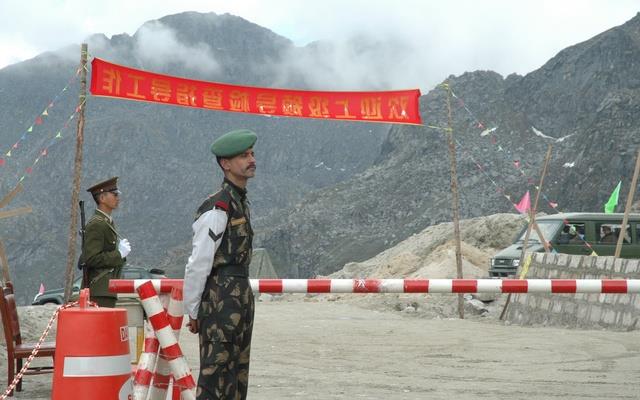Modi government will construct 44 ‘strategically important’ roads alongside India-China border and 21 km of axial and lateral roads in the areas bordering Pakistan. The Central Public Works Department (CPWD), the government construction agency has been asked to construct 44 strategically important roads for quick mobilization of troops along the border. The 4,000 km long Line of Actual Control (LAC) stretches from Jammu & Kashmir to Arunachal Pradesh. “The CPWD has been entrusted with construction of 44 strategically important roads along the Indo-China Border spanning 5 states of J&K, Himachal Pradesh, Uttarakhand, Sikkim and Arunachal Pradesh,” as per annual report of CPWD.
The total cost of the project is estimated at around 21,000 crore rupees. The approval of Detailed Project Review (DPR) by Cabinet Committee on Security (CCS) headed by PM Modi is in the process. The government will also build roads along Pakistan border in Punjab and Rajasthan. “A total of 945 km of lateral roads and 533 km of axial roads lie in Rajasthan (tentative cost Rs 3,700 crores) and 482 km of lateral roads and 219 km of axial roads in Punjab (tentative cost Rs 1,750 crores),” said the report.
The Modi government has undertaken various projects to enhance connectivity in border areas. Given the recent Doklam conflict with China and the deterioration of relations with Pakistan, it is important to improve connectivity in hilly border areas for movement of troops. The connectivity of northeastern India with rest of the country has been very poor. The Modi government has opened two bridges on Brahmaputra River in four years of its rule. The new Saraighat Bridge, built along the old rail cum Road Bridge was inaugurated by the Transport minister Nitin Gadkari in 2017. Another major bridge opened by Modi government in the previous year is Dhola Sadiya Bridge (also known as Bhupen Hazarika Bridge) which connects the state of Assam to Arunachal Pradesh. The strategically located bridge is very important from security point of view in the wake of Chinese activities in Arunachal Pradesh.
The strengthening of infrastructure in border areas is very important for security purpose as well as for the benefit of local population. When India fought 1962 Indo-China war, we had no existing infrastructure for easy movement of armed forces. Even after losing the war, successive governments made very little effort to develop the border areas due to heavy cost and difficulties in it.
China announced plan to build a massive dam on a tributary of Yarlung Zangbo (Tibetan name of Brahmaputra River) and it will be most expensive hydel project in the world. China plans to assert its claim over Arunachal Pradesh by building dam over Brahmaputra’s tributary.
India could give a befitting reply to China only if it has solid infrastructure in the region for movement of its armed forces to fight mighty Chinese forces. The infrastructure development is region is also important from civilian point of view, as it will make life of people in the regions a bit easier. The people in border areas region live in very difficult condition therefore investment by government is necessary. The infrastructure development in the region will also promote tourism in the region which will bring economic prosperity of people living in Border States.
